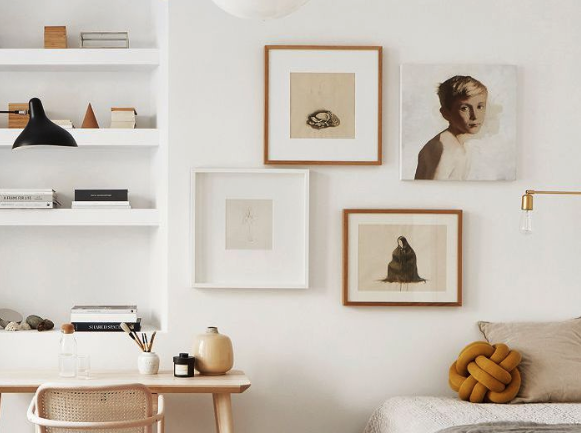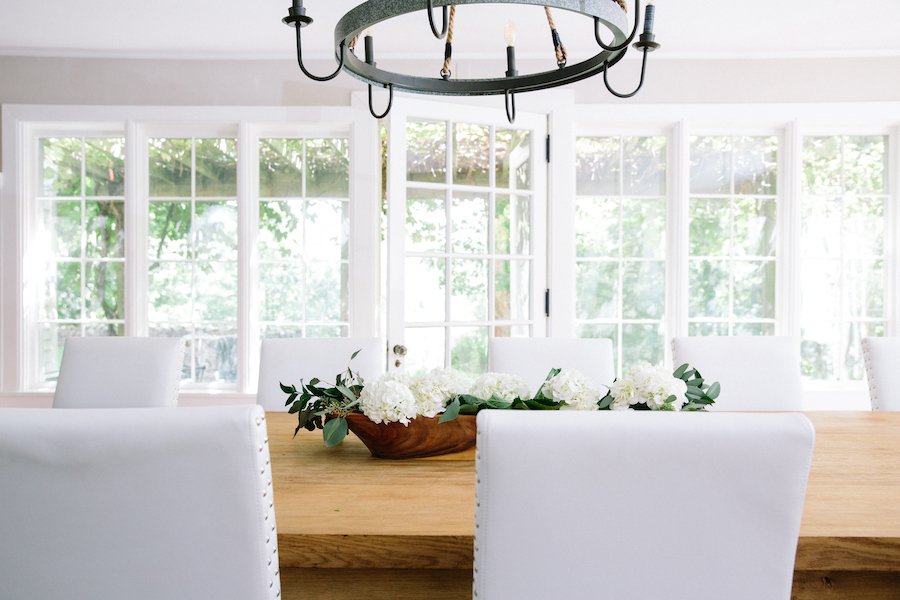We’re hanging onto summer 2019 by the cuff of our favorite linen pants and those espadrilles that… well, we honestly haven’t taken off since May. But, as the days get shorter, the air gets cooler, and you finally accept canvas shoes can no longer suffice in a foot of snow, we’re cracking the code to summer’s biggest myth: the ‘no whites after Labor Day’ rule. We’re breaking down the do’s and don’ts of designing with white after Labor Day.
Back in the day, linen would be off the shelves faster than the leaves could change. Nowadays, this rule isn’t so widely known. There are right and wrong ways to design with white–especially during the winter–but that doesn’t mean you can’t use them to lighten up a space while still keeping things cozy.
Here’s how to leverage whites from ivory to eggshell, helping you design a lighter space during the cooler, darker months.
Things aren’t all black and white when it comes to styling your home with black and white. There is a grey area, and by “grey area,” we mean white area. When it comes to choosing the right white, choose a few—a multi-tonal look is a great way to add depth and subtle contrast. Think about the lighting in your space. Warmer light can be balanced with cool, neutral tones and vice versa. Color is a product of light and the lighting of a space can affect the way a color presents itself. When painting with whites, sample a few different tones to see how they react to the lighting in your space.
Pro-tip #1: Having a hard time balancing your whites? Try the squint test. Looking at the space you’re designing, squint your eyes, letting a bit of light in and only allowing yourself to make out colors and shapes. Scan the room (keep your eyes squinted!) and try to notice any objects or areas that look particularly lighter or darker than others—these are the spaces that call for balance. Dark corners? Brighten the space with a light accent chair or shelving unit. Finding yourself squinting at the floor? It might be time to switch to a light-colored rug or leave hardwood flooring bare to reflect natural light from the ground up.
There is such a thing as too much “white space,” even in the most eloquent, minimalist spaces. Use a palette of black and white for wall decor to cultivate a sleek, elegant aesthetic or play with warmer neutrals; beiges and creams, for a cozier feel. Be mindful of the colors that you choose to surround your white walls and furniture, as the color white is highly reflective. Even the slightest piece of red décor can project a tint onto a white wall.
Pro-tip #2: Not all light is equal. Have you noticed the different types of light that different bulbs emit? When designing for a lighter space, consider the type of bulbs you’re using. An incandescent light bulb will emit a much warmer light than an LED or Halogen light, completely changing the cast the light brings to the room.

For inspiration on how to style with white after Labor Day, we look to our friends in Northern Europe who know winter best. Scandinavian design shows us just how timeless and homey a white palette can be, welcoming warm and cool light and thriving off of the simplicity of natural wood finishes and classic, functional furniture. Try adding plant-based accent pieces like wicker, raffia or rattan to add texture to your Scandi-inspired space. These natural materials stand out against white and contribute to the natural look and feel of the space. Adding natural textures and tones to compliment your whites can not only add visual interest and detail to your space, but it can make an otherwise, seemingly sterile space feel more warm and welcoming. Adding a house plant here or there is also a great way to bring color and contrast to your interiors. Plus, a little extra greenery inside makes the colder months go by just a little faster.
Tip from our designers: Fall 2019 is welcoming bleached wood for a coastal, natural feel. Thrift for something new, bleach your own wooden piece or channel your inner Renata Klein and take it to the beach ISO: a MoMA-worthy driftwood accent piece.


